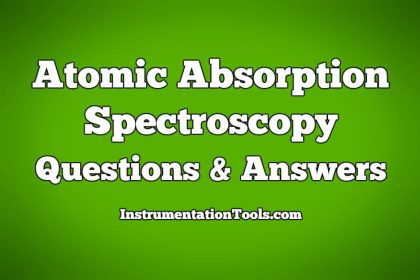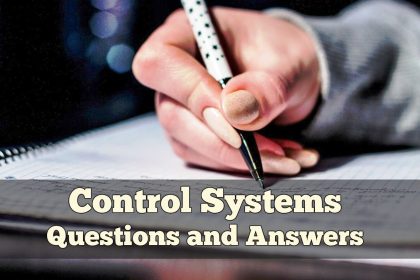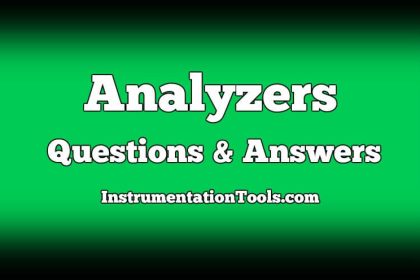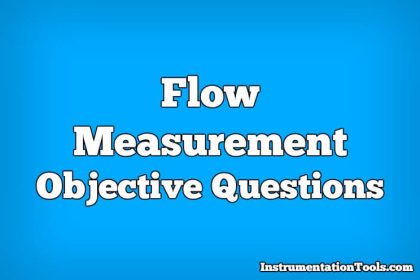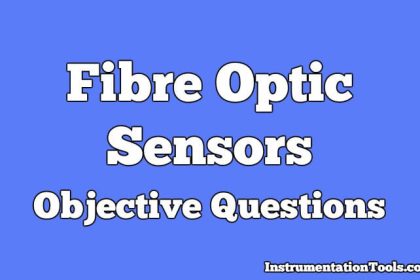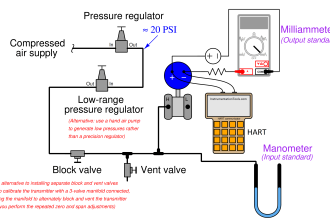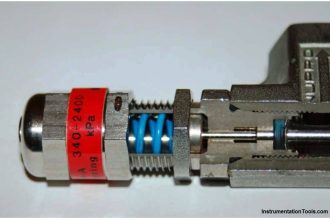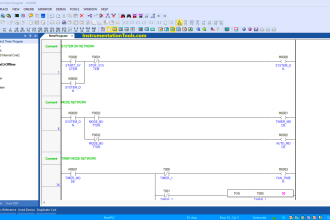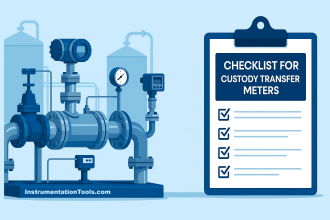Online Analyzers Questions & Answers
1. Conductivity and pH measurement are:
a. Two different techniques
b. Similar in operation
c. identical but given different names
d. Two techniques that use the same equipment
Answer: a
2. The three factors that control the conductivity of an electrolyte are:
a. Specific gravity, density, and volume
b. Concentrations, the material in solution, and temperature
c. Color index, turbidity, and temperature
d. Hydrogen on concentration, temperature, and pressure
Answer:b
3. pH is a measure of:
a. Effective acidity or alkalinity of a liquid
b. The oxidation or reduction properties of a solution
c. Specific conductance of an electrolyte or total ionic activity
d. Purity in an aqueous solution
Answer: a
4. A buffer solution is used with pH-measuring instruments to:
a. Standardize the equipment
b. Protect the equipment
c. Clean the electrodes
d. Platinize the reference electrode
Answer: a
5. Oxidation-reduction potential (ORP) is a measurement of :
a. The oxidizing or reducing chemical properties of a solution
b. The oxygen present in any quantity of a given gas mixture
c. The hydrogen ion concentration in a given solution
d. The degree of ionization for a particular solution
Answer: a
6. Capacitance measurement are usually applied to:
a. Conducting liquids
b. Non Conducting liquids
c. Gas measurements
d. Ionized gases
Answer: b
7. Which of the following are electrochemical measurements
a. Humidity and density
b. Turbidity and differential vapor pressure
c. pH and ORP
d. Dew point and boiling point rise
Answer: c
8. A salt (NaCl) solution must be controlled at a concentration of 12 percent.The best choice of measurement for the control system would be
a. Conductivity
b. pH
c. ORP
d. Capacitance
Answer: a
9. An industrial effluent stream is to be neutralized by adding a sodium hydroxide solution. The best choice of analytical measurement for the control system would be:
a. Conductivity
b. pH
c. ORP
d. Capacitance
Answer: b
10. Ion-selective measurements
a. Are similar to conductivity in operation but use a different cell
b. Are similar to capacitance measurement but use a different instrument
c. Are similar to pH measurement but use different electrodes
d. Are similar to density but use more exact techniques
Answer: c
11. A pH control system is used to neutralize a chemical waste stream being dumped into a municipal sewage system. The desired pH is 7 or complete neutrality. An unfortunate accident short circuits the cable connecting the electrodes to the measuring transmitter.The result will be:
a. The control valve admitting the neutralizing agent will fully open
b. The control valve will close
c. The control valve will remain approximately at its half-open position
d. The system will cycle
Answer: c
12. The concentration of salt in a liquid used to carry a slurry must be monitored. The best choice for measurement will be:
a. Electrodeless conductivity
b. pH
c. ORP
d. An ion-selective system
Answer: a
13. A pH system is to be selected. It is required that the system function with little or no maintenance The reference electrodes elected would be
a. A flowing type
b. A pressurized flowing type
c. A nonflowing type
d. A pressurized nonflowing type
Answer: c
14. The pH of 8 streams is to be monitored accurately. It is discovered that the temperature of this stream varies from 40 to 60°F
a. A measuring system with automatic temperature compensation is indicated
b. Temperature compensation is not necessary
c. A manual temperature compensation will be adequate
d. The pH range will determine the need for temperature compensation
Answer: a
15. The most popular carrier gas used in gas chromatograph is :
a. Helium
b. Air
c. Hydrogen
d. Oxygen
Answer: a


